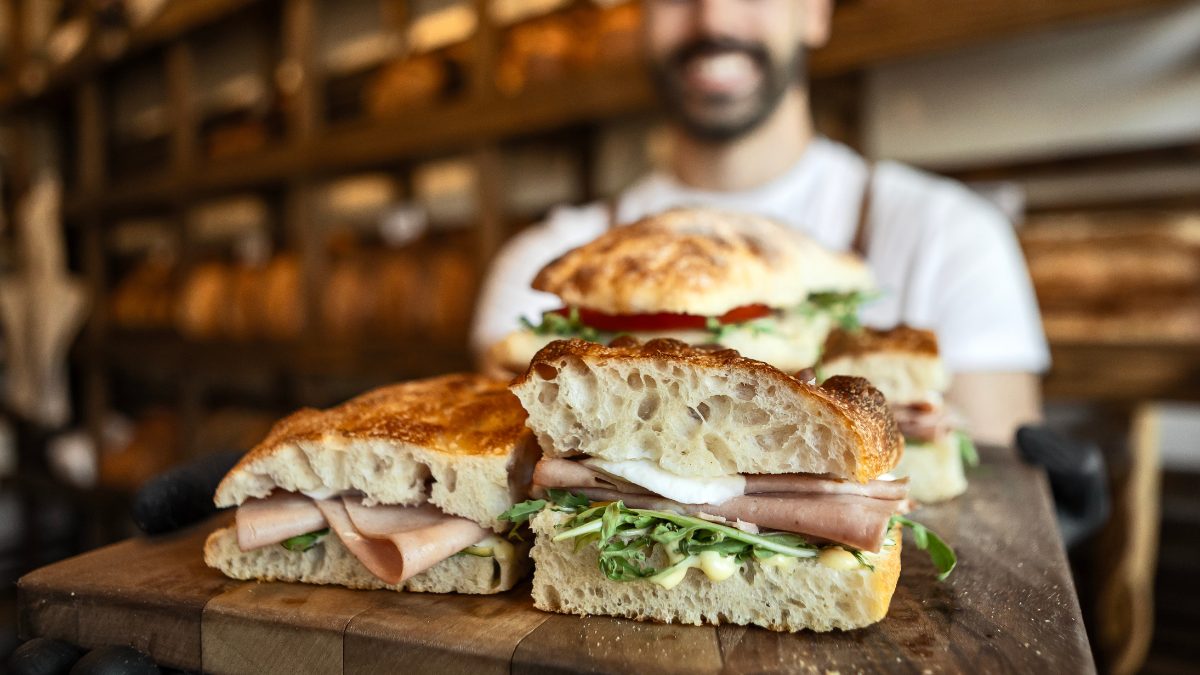
Before you reach for deli meat or condiments, consider this: your sandwich is only as good as the bread that holds it together. Bread isn’t just the vessel — it’s the foundation, the frame, the stage on which everything else performs. Whether you’re crafting a crispy panini, a stacked club, or a humble PB&J, choosing the right bread can turn an average sandwich into something craveable.
Start With the Texture
The first step to better sandwiches is knowing your textures. Bread isn’t one-size-fits-all — the right crumb and crust make all the difference.
Soft Breads for Gentle Fillings
Soft, tender breads like brioche, potato rolls, or sandwich loaves are perfect for delicate ingredients — think chicken salad, tuna, or egg sandwiches. Their pillowy texture supports the filling without overwhelming it. For a breakfast sandwich or anything involving scrambled eggs, soft bread is a must.
Crusty Breads for Bold Fillings
When you’re building a hearty sandwich — roast beef, pulled pork, grilled vegetables — a crusty bread like ciabatta, baguette, or sourdough provides structure and chew. These breads have enough backbone to handle juices and sauces without falling apart, and their texture adds satisfying contrast.
The Middle Ground
Not every sandwich needs to pick a side. Multigrain, whole wheat, or kaiser rolls offer a nice balance of sturdiness and softness. They’re the weekday heroes — versatile, neutral, and ready for anything from turkey clubs to veggie melts.

Match the Bread to the Filling (and Not the Other Way Around)
The golden rule: the filling decides the bread. If your filling includes moist components — tomatoes, pickles, sauces — you’ll want a denser crumb (like ciabatta or focaccia) that can absorb without collapsing. Avoid super-soft loaves that soak up liquid like a sponge. Heavy fillings (think steak, fried chicken, or meatballs) need a sturdy base. A thick baguette or sourdough keeps everything intact. For lighter sandwiches — cucumber, ham, or cheese — a softer bread creates better proportion and balance.
The Bread Should Complement, Not Compete
The bread’s flavor is just as important as its texture. It should support the ingredients, not fight them. If your fillings are highly seasoned — like spicy turkey, barbecue, or sharp cheese — choose a mild base such as white sandwich bread or ciabatta. These let the fillings shine. On the flip side, if your sandwich is minimal — like mozzarella and tomato or grilled vegetables — go for sourdough, rye, or pretzel buns. Their deeper flavors make the sandwich feel more complete without adding much else.
When Heat Makes It Better
Toasting does more than make bread crisp; it changes its chemistry. The caramelization deepens flavor, builds structure, and helps resist moisture. A light toast keeps your sandwich crunchy on the outside while staying soft inside — perfect for melts or paninis. Skip the heat for cold sandwiches like egg salad or cucumber tea sandwiches, where softness is part of the charm. Toasting can overpower delicate flavors.

Alternative Sandwich Bases
Bread doesn’t have to mean loaf. Sometimes, the best sandwich starts with a different foundation:
- Flatbreads for Mediterranean-style wraps or shawarma.
- English muffins for breakfast sandwiches.
- Croissants for buttery indulgence.
- Lettuce wraps or gluten-free buns for lighter, fresher alternatives.
Popular Sandwich Breads to Choose From
Here’s a short cheat sheet to pair the right bread with your sandwich type:
- Sourdough: Tangy, chewy, and structured — perfect for grilled cheese, BLTs, or roast chicken sandwiches.
- Ciabatta: Airy and slightly crisp; best for Italian-style sandwiches and anything with olive oil or melted cheese.
- Brioche: Soft, buttery, and slightly sweet — great for breakfast sandwiches, burgers, or fried chicken.
- Whole Wheat or Multigrain: Nutty and hearty — a healthy base for turkey, veggies, or avocado sandwiches.
- Rye: Dense, aromatic, and slightly sour — the classic choice for pastrami, corned beef, or Reubens.

;Resize,width=767;)
